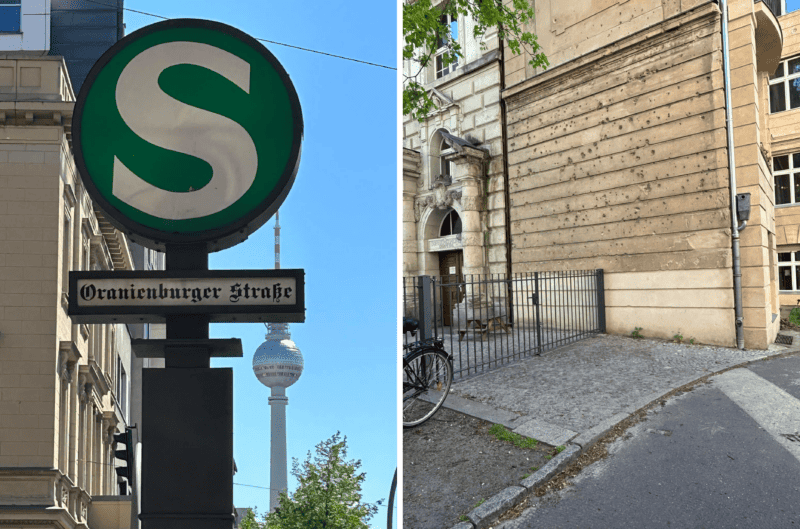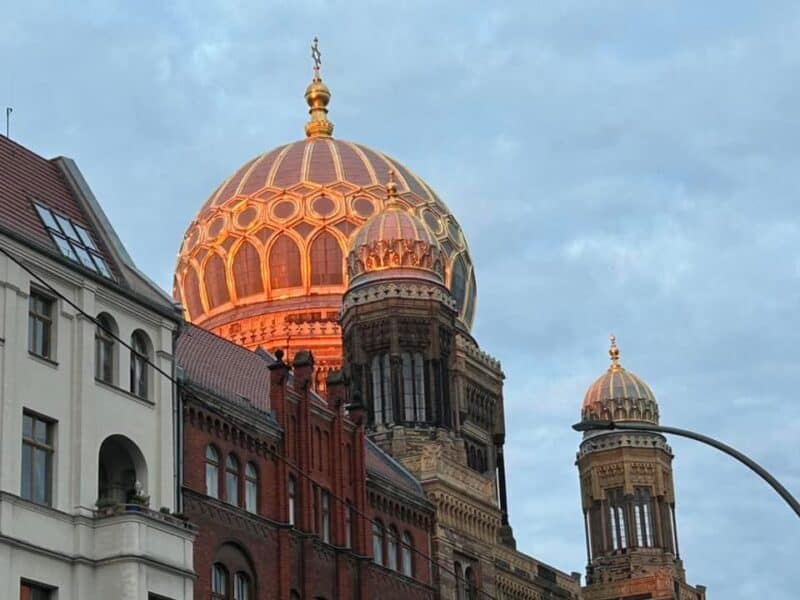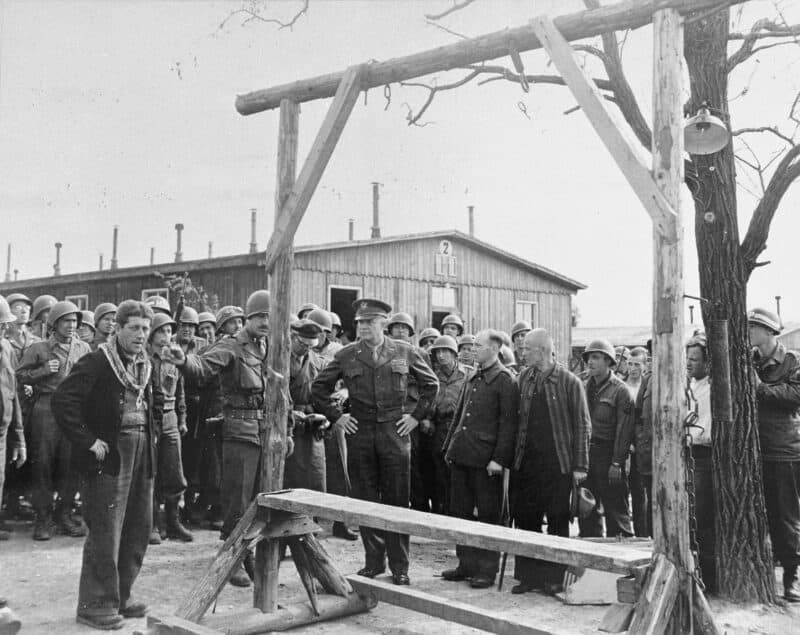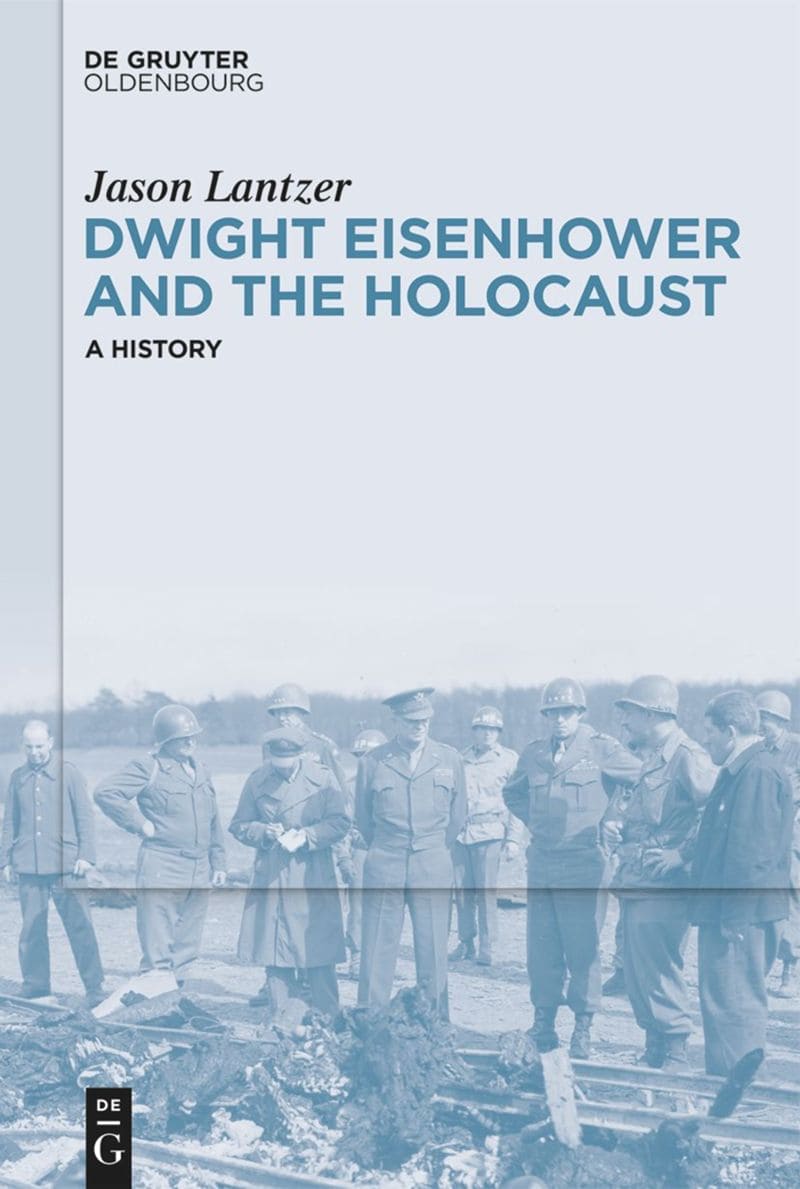From Ohrdruf to Berlin: Eisenhower’s Enduring Legacy of “Never Again”
“Never again is now” – a slogan that rings truer than ever today – impels us to recall one of the first people who called upon the world to bear witness to the atrocities of the Holocaust and who worked actively to ensure that it would never happen again.
In the heart of Berlin lies Oranienburger Straße. Just a short walk or ride from Hackescher Markt, Museum Island, the Brandenburg Gate, Alexanderplatz, and Humboldt University, for many Berliners and visitors to the city, the street is their gateway to exploring Germany’s capitol.
Despite the modern gloss and development, it is not hard to imagine what this area looked like a century ago. Enough nineteenth- and early twentieth-century buildings remain, have been restored, or emulated to showcase a part of the city where Germans lived, worked, and worshiped beside one another.

It is also easy to see the scars left in the neighborhood by the Second World War. Like much of Berlin, the area is a walkable memorial to both the Allied bombing campaign and the street-to-street battles that were waged in April and May of 1945 as Soviet forces entered the city. Historic markers as well as battle scarred walls bear witness to the ferocity of the conflict.
One of the buildings that exemplifies this history is the New Synagogue. Built in 1866, it became the spiritual home to over 3,000 members by the 1920s. This area, where Germans of several faiths once lived together in peace, was torn apart by the rise of the National Socialists to power. During the Kristallnacht pogrom on 9 November 1938, the synagogue was targeted, its interior desecrated. However, the building itself was saved by the intervention of a local police lieutenant who brandished a pistol and ordered the vandals out of the building, allowing the fire department to save the structure.

The congregation continued to worship and use the building as a community center until 1940, when the Nazis ordered services to end and most of the building was seized. Many of its members were killed in concentration camps and the synagogue itself was badly damaged by the Allied bombing campaign from November 1943 to March 1944. Partly rebuilt and with a portion of the building turned into a museum, the New Synagogue today continues to contribute to both the Berlin skyline and the vitality of the city it calls home.
“The past, it seems, is never very far away.”
The legacy of the Second World War remains potent in this part of Berlin, perhaps even more so than during its time as part of East Germany when it lay on the communist side of the Iron Curtain and Berlin Wall. A stroll along Oranienburger Straße reveals not only battle damage and historic markers but also police officers guarding the New Synagogue, a school, and other Jewish cultural centers in the area. The past, it seems, is never very far away.
Eisenhower and the Holocaust
To understand why it is important that modern residents and visitors alike remember this history and its modern implications—especially in the wake of rising antisemitism around the globe since the events of 7 October 2023 and the subsequent conflict in Gaza—it behooves us to recall one of the first people who called upon the world to not just bear witness to the Holocaust but also worked to ensure that it, and the totalitarian system that perpetuated it, never happened again. Such a man was Dwight Eisenhower.
As the top American general in the European Theater of Operations, Eisenhower’s task in World War II was simple enough: lead the Western allies to victory. While he always viewed Nazi Germany and Fascist Italy as his opponents, until April 1945, the conflict remained largely straightforward in his mind. The goal was to win the war and liberate the places the Axis powers had conquered. Then came Ohrdruf.
“Eisenhower’s visit to the camp changed how he saw the war.”
A sub-camp of the larger (and better known) Buchenwald, Ohrdruf was the first camp in the vast network of concentration camp liberated by American forces. Discovered by accident, the soldiers were shocked by the “living skeletons” they encountered, as well as by the number of bodies, the smell, and the barbarity that they uncovered. About a week after the first Americans arrived, Eisenhower happened to be in the area, along with Generals George Patton and Omar Bradley. After a jovial visit to the Merkers salt mine, where the generals inspected room after room of Nazi-looted artworks, gold, and other valuables, Eisenhower’s party made their way to what was already being described as a “hell camp” by those who had seen it.

Eisenhower’s visit to the camp changed how he saw the war. When aides tried to get him to leave, he refused, saying he had to “get this” in its entirety. He talked with former prisoners. He visited seemingly every building. He looked at the dead, the dying, and the instruments of torture his men had found. Eisenhower left the camp believing that he knew what his men were fighting against.
Never Again Is Now
In those final weeks, the war took on a moral hue for him. His decision to document—not for propaganda but for historical record—what his men were discovering and to publicize it marks a key difference from how earlier camps, such as Auschwitz, were handled. Furthermore, he ordered his men as well as German civilians to visit the camps as they were liberated. He was determined that such atrocities would never again be permitted.
Encountering Ohrdruf helped transform Eisenhower into a dedicated anti-totalitarian. Less than a decade after he walked the camp’s ground, Eisenhower became President of the United States, leading his country and the Western allies in the Cold War against the Soviet bloc. How he conducted himself in office was also shaped by his experiences at Ohrdruf.
In November 2023, on the 85th anniversary of Kristallnacht, the slogan “never again is now” was projected onto the Brandenburg Gate, just two subway stops from Oranienburger Straße.
Brandenburg Gate in Berlin, 85 years after Kristallnacht:
“Never again is now!” pic.twitter.com/e8xTFzDz9M
— European Jewish Congress (@eurojewcong) November 9, 2023
Nearly 80 years before, Eisenhower first called the world to that very slogan. It remains for us to live up to it.
Learn more in this related title from De Gruyter
[Title image: United States Holocaust Memorial Museum, courtesy of National Archives and Records Administration, College Park]
